









“蒙古族的傳統(tǒng)藝術(shù)需要傳承和發(fā)揚(yáng),這是屬于全人類的文化瑰寶。”
拉西敖斯?fàn)枺?7歲
琶杰-格斯?fàn)柕牡谝淮鷤鞒腥?/div>
Traditional Mongolian art should be protected and promoted, and it belongs to all of humankinds.
Raxiodser, 77
Inheritor and singer of Mongolian epic cycle, The Epic of King Geser






來(lái)自通遼市扎魯特旗的拉西敖斯?fàn)柦衲?7歲了。撥弄著手中的四胡,他輕聲吟唱著《格斯?fàn)枴分械慕?jīng)典曲段。《格斯?fàn)枴繁蛔u(yù)為世界最長(zhǎng)史詩(shī),年逾七旬的拉西敖斯?fàn)柪先巳阅芤蛔植宦┑赜涀∶恳痪涓柙~、每一處旋律。
Holding his four-stringed fiddle, 77-year-old Raxiodser, a musician from Jarud Banner in Tongliao, Inner Mongolia, can still remember the texts of the “Epic of King Geser,” an ancient epic cycle reputed by some to be the longest in the world.






16歲時(shí),拉西敖斯?fàn)柤尤肓藶跆m牧騎,成為一名光榮的民間藝術(shù)家。打那時(shí)起,他就決定奉獻(xiàn)自己的一生,傳承并弘揚(yáng)傳統(tǒng)文化。師承《格斯?fàn)枴反髱熍媒埽麑⑦@一偉大的民間藝術(shù)發(fā)揚(yáng)光大。時(shí)至今日,許多年輕藝術(shù)家?guī)煶兴瑢⑦@一文化瑰寶奉獻(xiàn)給世界各地的觀眾。
《蒙古族說(shuō)唱藝術(shù)家拉西敖斯?fàn)枴安煌跣?傳承民族文化”》
點(diǎn)擊閱讀
As an artist and a promoter of traditional culture, he joined Ulan Muqir, a traveling art troupe performing for herdsmen in remote areas at the age of 16, and has dedicated his whole life to preserving traditional Mongolian Culture. Now he has countless students, who help him to introduce the Epic of Geser to the world.
Culture inheritance in Inner Mongolia: the story of great King Geser


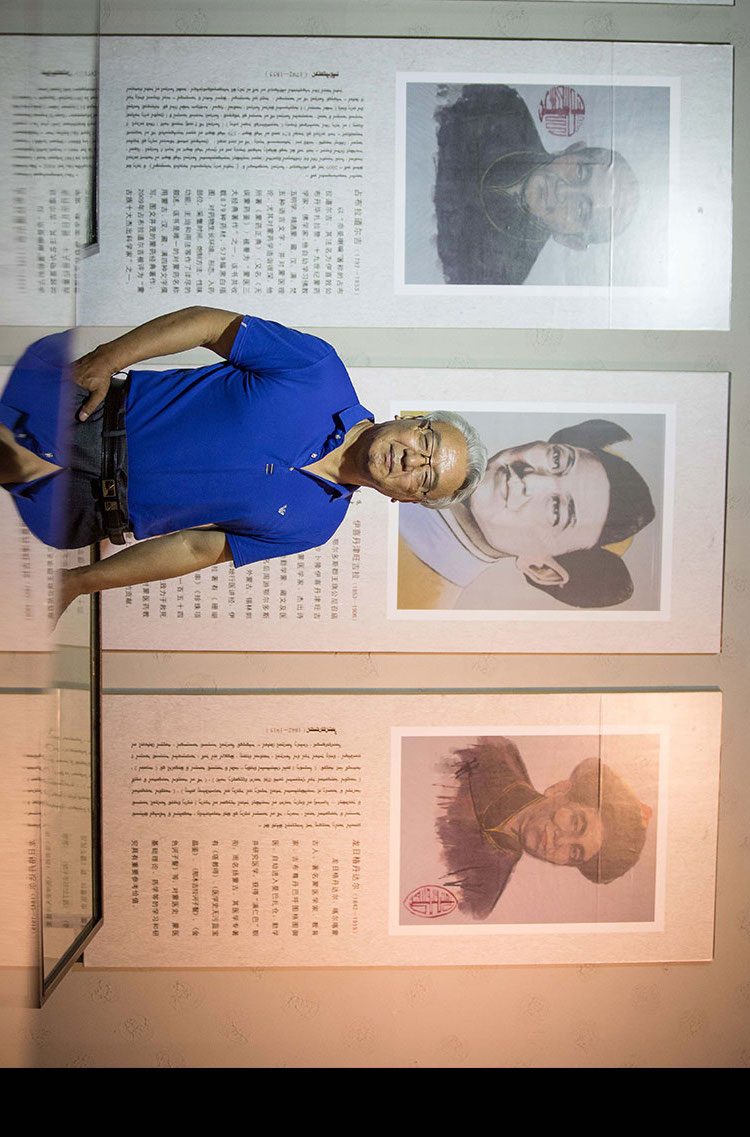



“蒙醫(yī)藥的歷史源遠(yuǎn)流長(zhǎng)。如今,這一民族瑰寶正在逐漸復(fù)興,從一門較為小眾的傳統(tǒng)醫(yī)學(xué)轉(zhuǎn)變?yōu)橄到y(tǒng)現(xiàn)代的醫(yī)藥科學(xué),為更多人所熟知。”
白彥滿都拉,63歲
內(nèi)蒙古民族大學(xué)退休蒙西醫(yī)結(jié)合臨床醫(yī)學(xué)教授
“Generally considered to date back to the time of Genghis Khan (1162-1227, founder of the Mongol Empire), TMM is now stepping out of a relatively small circle of practitioners to reach more people.”
Bayanmandula, 63
Retired professor of traditional Mongolian medicine (TMM)






雖已退休多年,63歲的白彥滿都拉依然執(zhí)著于蒙醫(yī)藥的科學(xué)研究。作為“文革”后的第一批蒙醫(yī)專業(yè)大學(xué)生,白彥滿都拉將自己的青春和熱誠(chéng)都奉獻(xiàn)給了蒙醫(yī)藥。老驥伏櫪,志在千里。如今已經(jīng)退休的他依然為學(xué)生講課答疑,將這門古老傳統(tǒng)醫(yī)學(xué)的秘密傳遞給年輕的一代人。
Born into a Mongolian family, Bayanmandula started to grow a keen interest in TMM when he was a child. When China's national college entrance exam, the gaokao, resumed in 1977, Bayanmandula took the exam and was admitted to the Inner Mongolia Medical University, becoming one of China's first university students to major in TMM.






歷經(jīng)數(shù)十年的辛苦耕耘,白彥滿都拉所在的內(nèi)蒙古民族大學(xué)蒙醫(yī)藥學(xué)院已經(jīng)擁有發(fā)明專利15個(gè)、新藥證書2個(gè)、臨床批件6個(gè),專著60余部。每年,超過(guò)1100名中外學(xué)生來(lái)內(nèi)蒙學(xué)習(xí)傳統(tǒng)蒙族醫(yī)藥,許多學(xué)成后都成為了專業(yè)的蒙藥醫(yī)師。
《復(fù)興中的蒙醫(yī)藥:傳統(tǒng)與現(xiàn)代的完美結(jié)合》
點(diǎn)擊閱讀
After decades of hard work, Bayanmandula and his colleagues have successfully conducted over 300 TMM research programs. Every year, over 1,100 domestic and foreign students come to study TMM, many of whom go on to become professional TMM physicians.
Revival of traditional Mongolian medicine: a combination of old and new






“普通話是我們中國(guó)人的母語(yǔ),蒙語(yǔ)是我們蒙古族人的文化根源,英文則讓我們的孩子走向世界,他們將成為內(nèi)蒙古新時(shí)代的領(lǐng)航員。”
康喜瑪,52歲
扎魯特旗蒙古族實(shí)驗(yàn)小學(xué)校長(zhǎng)
“The Mongolian language is our cultural root, Mandarin represents our identity as Chinese, while English makes our students international citizens, our children will lead Inner Mongolia to a brand-new era.”
Kangxima, 52
Head of Jarud Mongolian Primary School






作為中國(guó)蒙古族人口最多的地級(jí)市,通遼的蒙古族語(yǔ)言和傳統(tǒng)文化教育發(fā)展迅猛,方興未艾。在全市109所以蒙語(yǔ)授課,弘揚(yáng)蒙古族傳統(tǒng)文化的中小學(xué)中,扎魯特旗蒙古族實(shí)驗(yàn)小學(xué)的教育成果尤為出色。
Located in Tongliao, a city that has the largest Mongolian population in China, Jarud Mongolian Primary School is one of the 109 local schools that feature traditional Mongolian culture, as well as using Mongolian as their primary teaching language.


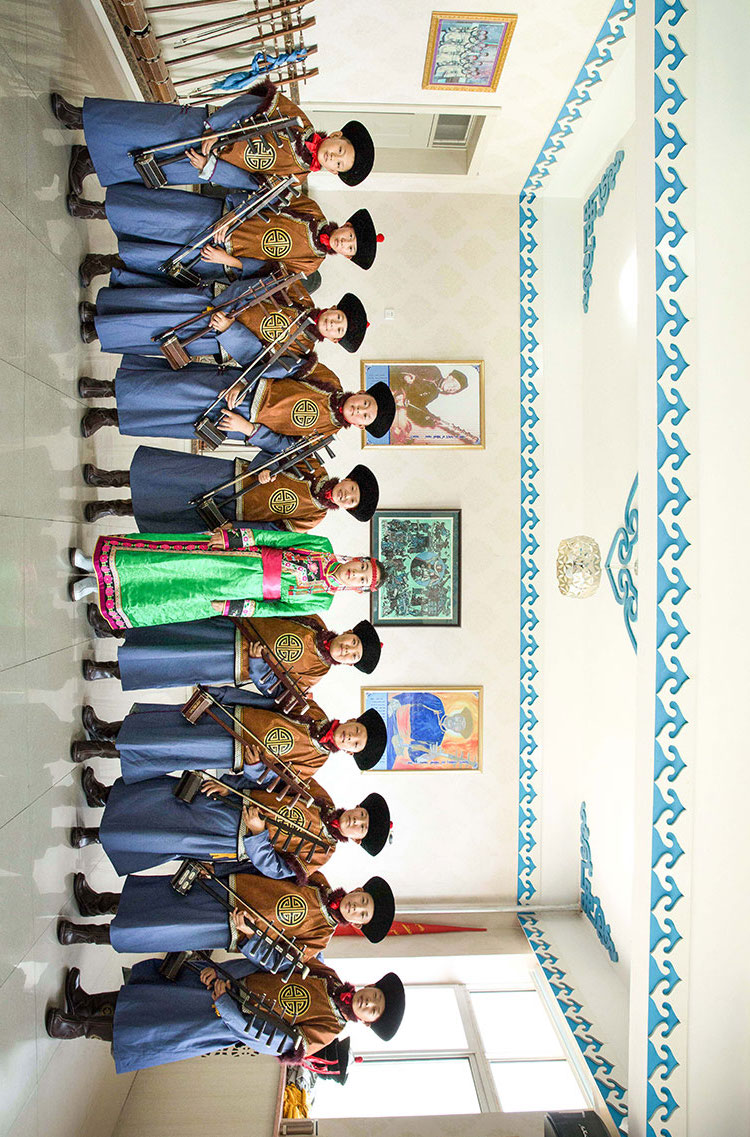



自2005年起,康喜瑪便開始邀請(qǐng)蒙古族民間藝術(shù)家來(lái)學(xué)校開設(shè)蒙族文化興趣班,并聘用專業(yè)教師培養(yǎng)孩子們對(duì)本民族文化的熱愛(ài)。目前學(xué)校開設(shè)十余個(gè)蒙族文化興趣班,教授烏力格爾、馬頭琴、科爾沁民歌、蒙古象棋等科目。
Though traditional Mongolian culture has always been a compulsory course at school, Kangxima invited cultural experts to develop a systematic teaching module for the students. From 2005, Kangxima and her colleagues began researching Mongolian culture, as well as designing a professional course for the students.


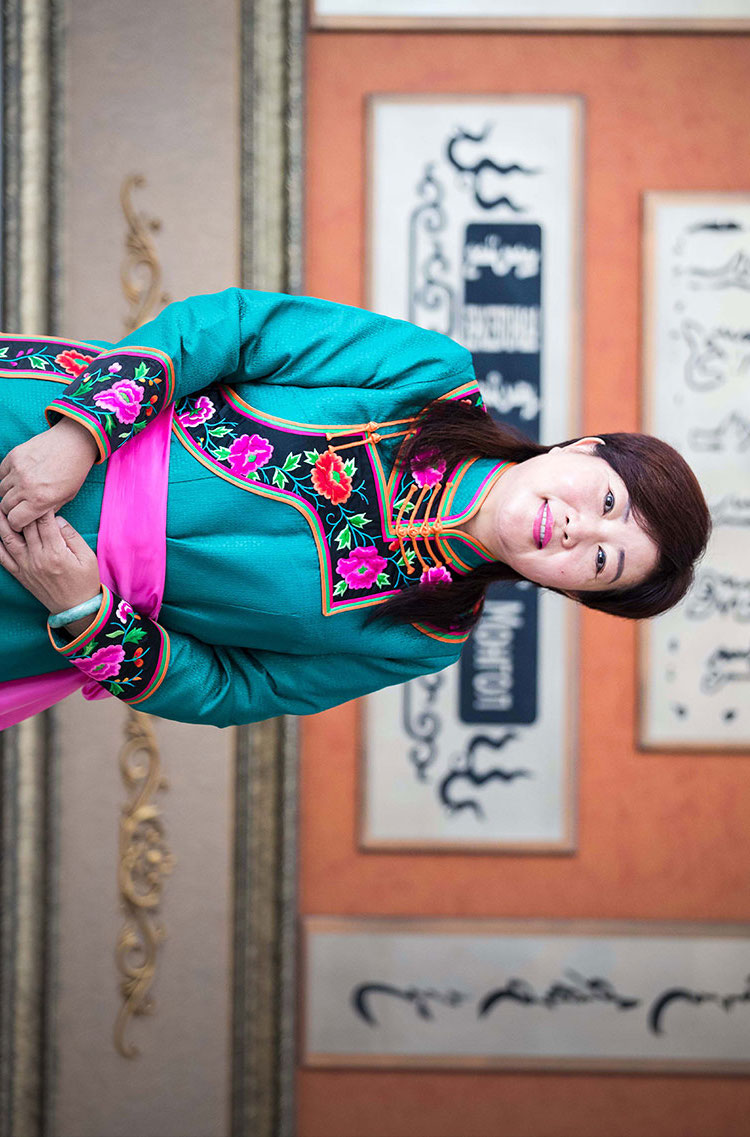



“我是一個(gè)教育工作者,也是一個(gè)地地道道的蒙古族人。在流行文化沖擊傳統(tǒng)文化的大環(huán)境下,保護(hù)和傳承蒙古族的文化瑰寶就顯得尤為重要。我們的孩子要海納百川、博采眾長(zhǎng),在掌握本民族語(yǔ)言文化的基礎(chǔ)上,還要團(tuán)結(jié)其他民族的小伙伴,了解世界文化。做一個(gè)熱愛(ài)祖國(guó)的中國(guó)人,一個(gè)以民族文化為榮的蒙古族人,一個(gè)通曉世界的世界公民。”康喜瑪說(shuō)。
《草原文化的繼承者:方興未艾的內(nèi)蒙古傳統(tǒng)文化教育》
點(diǎn)擊閱讀
"As a Mongolian myself, I know how important it is to preserve our traditional culture, especially nowadays, when market-oriented popular culture prevails among the young generation," said Kangxima, head of Jarud Mongolian Primary School.
Cultural inheritors on the grassland: traditional art thrives in Inner Mongolian schools






“常有人跟我說(shuō)治沙植樹不是女人該干的活,但我絕不認(rèn)同。女人和男人一樣有手有腳,一樣勇敢堅(jiān)強(qiáng),也一樣能為家鄉(xiāng)的綠化和沙漠的治理貢獻(xiàn)自己的力量。”
敖特更花,43歲
獨(dú)貴塔拉鎮(zhèn)治沙民工隊(duì)隊(duì)長(zhǎng)
“People told me that planting trees was not a job for a woman. I wanted to prove to them that women are as strong as men, and we can also make our contribution to stopping the spread of desert.”
Otgonhuar, 43
Leader of sand control team in Kubuqi Desert






敖特更花的家鄉(xiāng)獨(dú)貴塔拉鎮(zhèn)位于中國(guó)第七大沙漠——庫(kù)布其沙漠的腹地。小時(shí)候的敖特更花憎惡沙漠,憎惡自己的家鄉(xiāng)。在她看來(lái),沙漠吞噬了她生活中一切美好的事物,埋葬了歷代人對(duì)綠色的渴望。
Living in Duguitala, a small village nestled in the Kubuqi Desert, China's seventh-largest desert, Otgonhuar used to hate her hometown and the deserts surrounding it.






“小時(shí)候,我們家的房門常在一夜之間就被沙子堵住,只能破窗而出。房屋常被黃沙掩埋,當(dāng)?shù)厝酥荒懿煌5匕峒摇!卑教馗ㄕf(shuō)道。
"When I was a kid, moving dunes would block our doorway overnight, and we had to fight our way out from the windows. Our houses were constantly buried under sand, so we had to move quite often," said Otgonhuar.


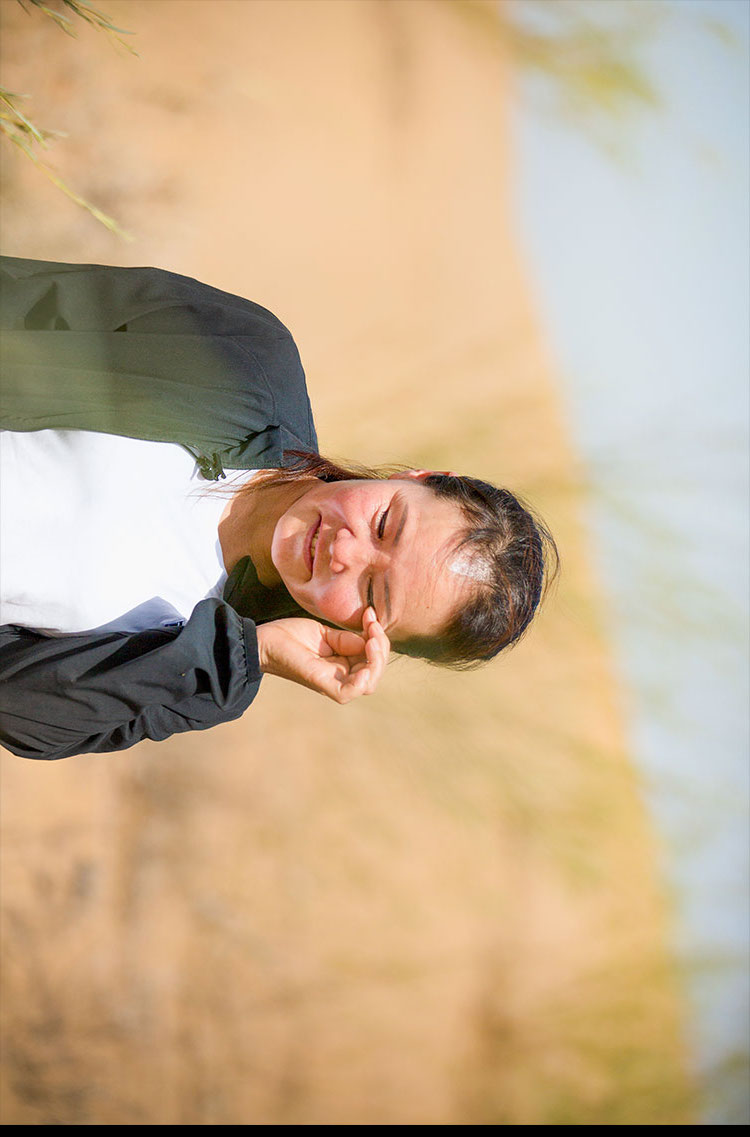



隨著庫(kù)布其穿沙公路的開通,敖特更花的想法發(fā)生了改變。她不再對(duì)沙漠植樹這一倡議嗤之以鼻,而是全身心地投入其中,想要為家鄉(xiāng),為沙漠帶來(lái)一抹寶貴的綠色。作為獨(dú)貴塔拉鎮(zhèn)200多個(gè)治沙民工隊(duì)唯一的女隊(duì)長(zhǎng),敖特更花向世人證明,女人能頂半邊天,女人能種半坡樹。
In 2007, Otgonhuar received an offer from a local company to plant trees in the Kubuqi Desert. She gathered workers from poor families and began her tree-planting business. Under her leadership, 25 low-income workers now earn a daily wage of around 200 RMB.






“我的民工隊(duì)鼓勵(lì)女性的加入。我希望她們能擺脫世俗偏見(jiàn)和自身的局限,大膽地投入到自己所熱愛(ài)的工作中。這世上沒(méi)有男人能做,女人不能做的事情。” 敖特更花說(shuō)。
《“沙漠玫瑰”敖特更花》
點(diǎn)擊閱讀
"Many women, who dared not to step out of their comfort zones, were encouraged to join my team. There is nothing a man can do that a woman can't," said Otgonhuar.
Roses in the desert: planting an oasis between the dunes






“牛糞可以用來(lái)為牧草施肥,人工種植的有機(jī)牧草又能為牛群提供養(yǎng)料,保護(hù)草原不受傷害。采用新技術(shù)養(yǎng)牛后,我們的牧民得以脫貧,草原的環(huán)境也更好了。”
劉金山,39歲
科左后旗巴嘎塔拉蘇木南巴嘎查黨支部書記
"Cow manure can be used to grow shrubs and grass, while foraging naturally can help cattle grow healthier and faster. Now all of our cows are kept in controlled areas to help protect the local environment."
Liu Jinshan, 39
Cattle breeder, leader of poverty alleviation


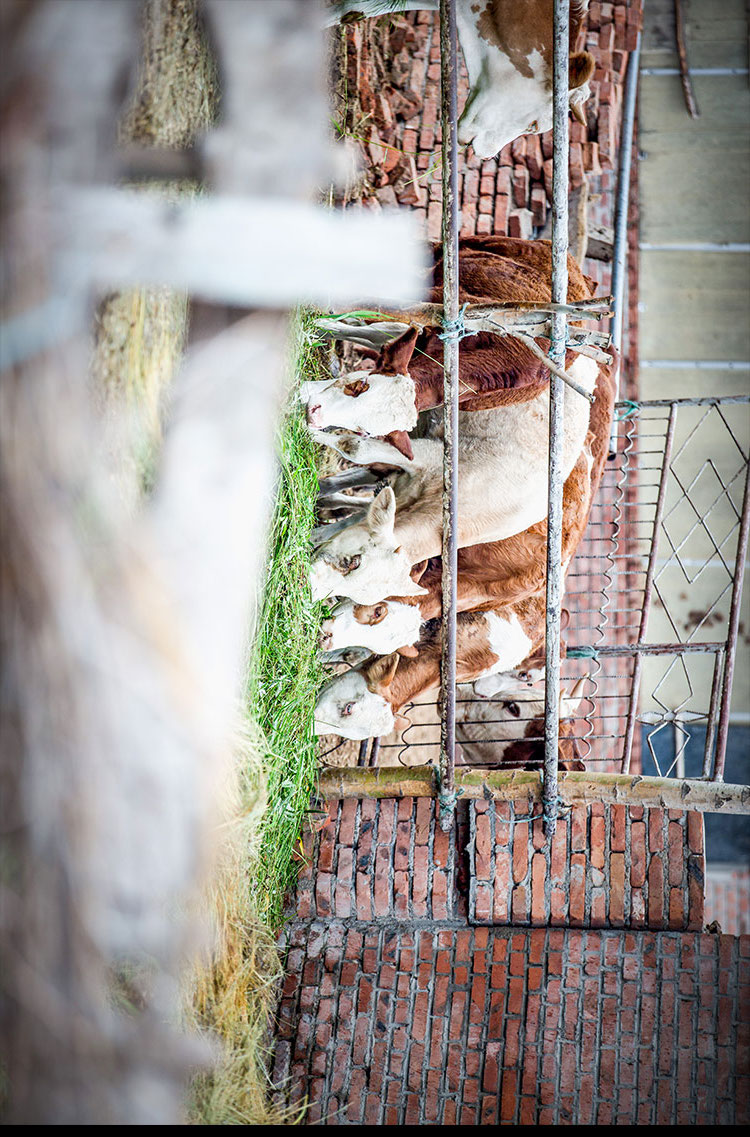



乍看之下,劉金山的養(yǎng)牛場(chǎng)并不起眼,這里卻是中國(guó)西門塔爾牛的發(fā)源地,也是馳名中外的科爾沁牛肉的故鄉(xiāng)之一。
Located in Horqin Left Rear Banner of Tongliao, Inner Mongolia, Liu Jinshan's small pasture is not impressive at first glance, but the cattle here enjoy worldwide popularity. Horqin beef, the only meat produced in China that is recognized by the International Meat Secretariat, has helped locals leave poverty behind.


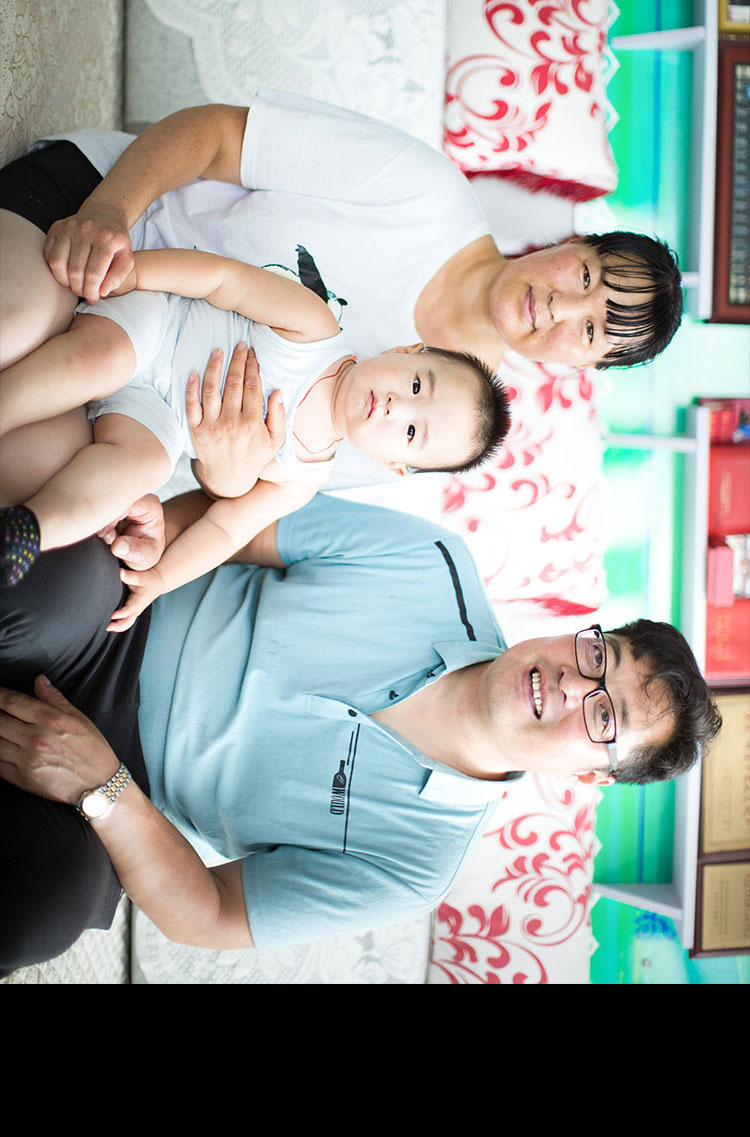



從70年代起,當(dāng)?shù)乇銓⒈镜攸S牛與由加拿大引進(jìn)的西門塔爾牛雜交,時(shí)至今日已經(jīng)培育了5代雜交“科爾沁牛”,被稱為中國(guó)的“西門塔爾牛”。科爾沁牛肉質(zhì)鮮嫩,成為當(dāng)?shù)刈钣忻奶禺a(chǎn),在世界上也享有美譽(yù)。
According to Liu, technology and brand awareness are the secret weapons that helped Horqin beef earn its global reputation. Residents formed a cattle cooperative in 2012, where resources and investment were gathered to adopt advanced technologies, as well as develop marketing strategies.






靠養(yǎng)牛發(fā)家的劉金山不但自己脫貧,還帶著全村人一起致富。曾幾何時(shí),當(dāng)?shù)氐呢毨Ъ彝ツ晔杖胫挥胁坏?000元,現(xiàn)在每戶人家都至少養(yǎng)4頭牛,每頭牛的純利潤(rùn)就高達(dá)5000元。
《內(nèi)蒙古農(nóng)牧民:堅(jiān)持“綠富同興”》
點(diǎn)擊閱讀
With the reputation of Horqin beef spreading globally, locals have also gained great benefits. Most poverty-stricken families used to earn less than 2,000 RMB per year, but now, every household in Liu's village keeps at least four cows, and each can generate a net profit of over 5,000 RMB.
Poverty Alleviation in Inner Mongolia: Tradition, innovation and greenery






“呼麥?zhǔn)且豁?xiàng)歷史悠久的蒙古藝術(shù)。我讀書的時(shí)候?qū)W習(xí)呼麥,現(xiàn)在的工作則是呼麥表演,呼麥讓我為傳統(tǒng)文化感到驕傲。內(nèi)蒙古是一片適合傳統(tǒng)文化發(fā)展的土壤,我想繼續(xù)在這里弘揚(yáng)呼麥藝術(shù)。”
朝格圖,26歲
蒙古青年呼麥藝術(shù)家
“Khoomei is a traditional art form that has been practiced for hundreds of years. I studied it at school, because it makes me proud of Mongolian culture.”
Qogtu, 26
Khoomei singer from Mongolia


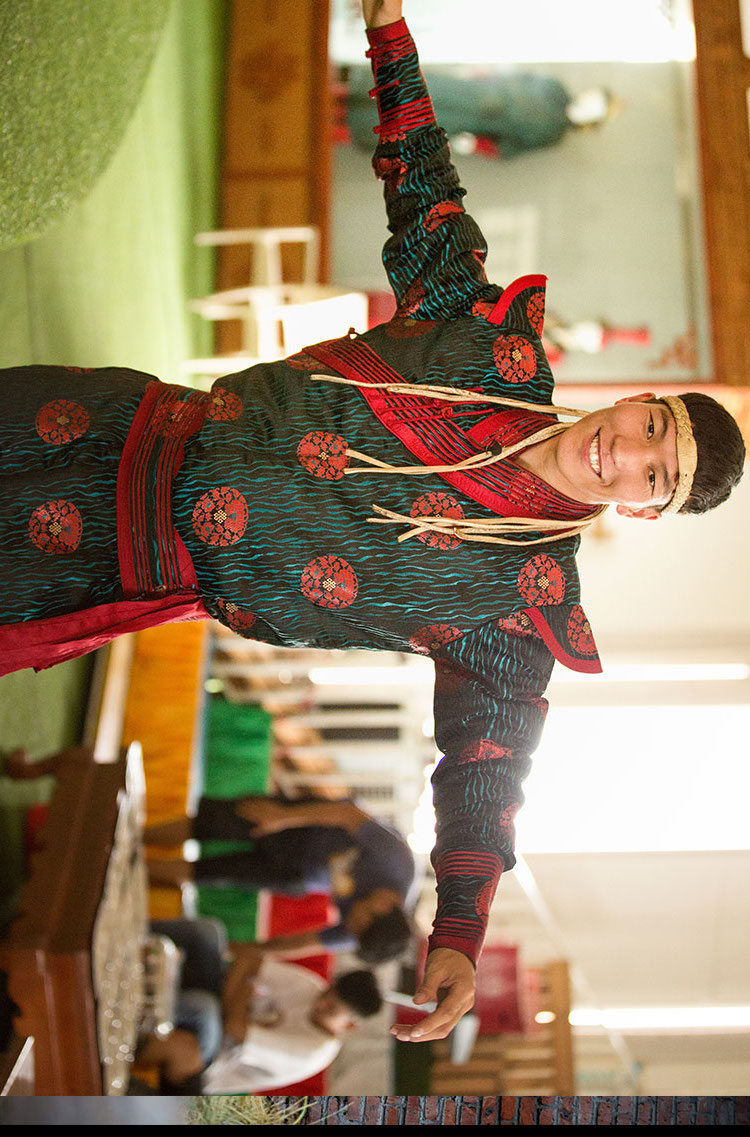



26歲的呼麥藝術(shù)家朝格圖來(lái)自蒙古國(guó)。幾個(gè)月前,他和同伴們來(lái)到鄂爾多斯,在這片浸透著蒙古族文化的熱土上,這批年輕人開始了自己的表演生涯。
Qogtu, a Khoomei singer from Mongolia who has been performing traditional throat singing at a cultural theater in Ordos for three months, said he would promote traditional Mongolian art to the world.


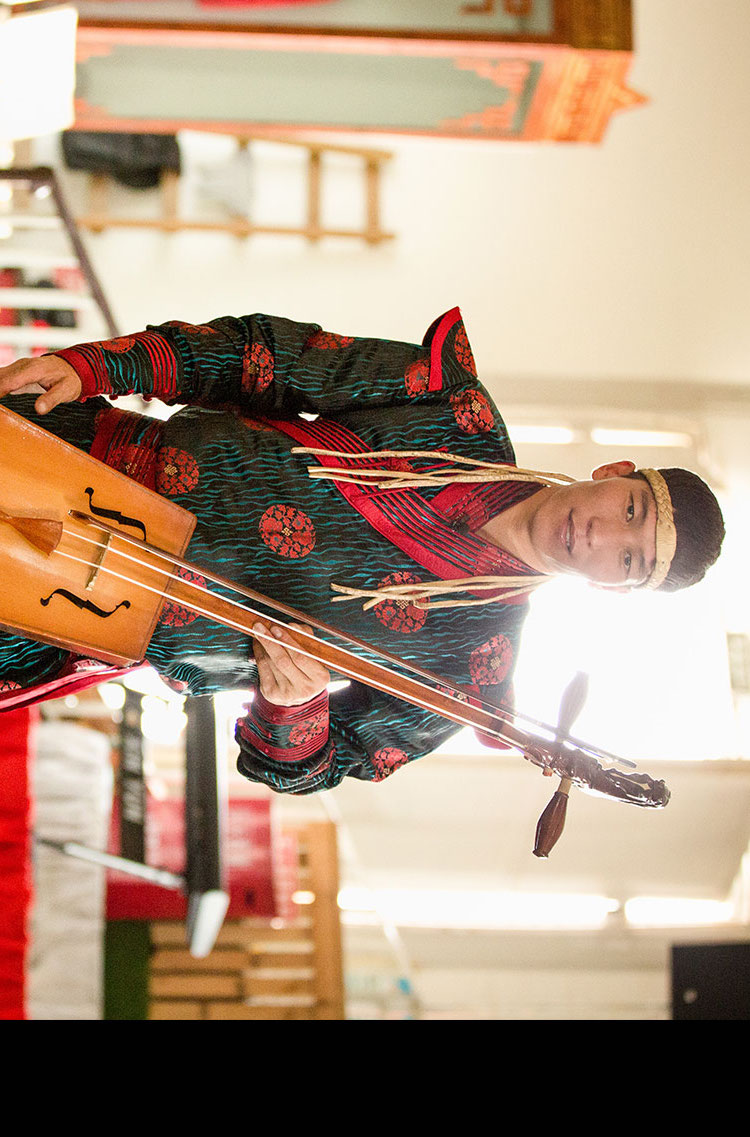



在朝格圖看來(lái),內(nèi)蒙古是一片適合傳統(tǒng)文化生存的土壤。觀眾們對(duì)他的呼麥表演報(bào)以熱烈的掌聲,這讓他深感驕傲,也為自己作為中蒙兩國(guó)文化使者的角色感到自豪。
“Khoomei is a traditional art form that has been practiced for hundreds of years. I studied it at school, because it makes me proud of Mongolian culture,” he said.






雖然朝格圖在內(nèi)蒙古才生活幾個(gè)月,他對(duì)這片土地卻產(chǎn)生了深深的感情。他希望自己的歌聲能在這里受到歡迎,也希望能為傳承呼麥藝術(shù)貢獻(xiàn)一份力量。
《蒙古族說(shuō)唱藝術(shù)家拉西敖斯?fàn)枴安煌跣?傳承民族文化”》
點(diǎn)擊閱讀
Qogtu explained that he would like to stay in Inner Mongolia longer, as the atmosphere surrounding traditional culture there is strong. He further noted that he wanted more people to learn Khoomei, and to know the beauty of it.
Culture inheritance in Inner Mongolia: the story of great King Geser


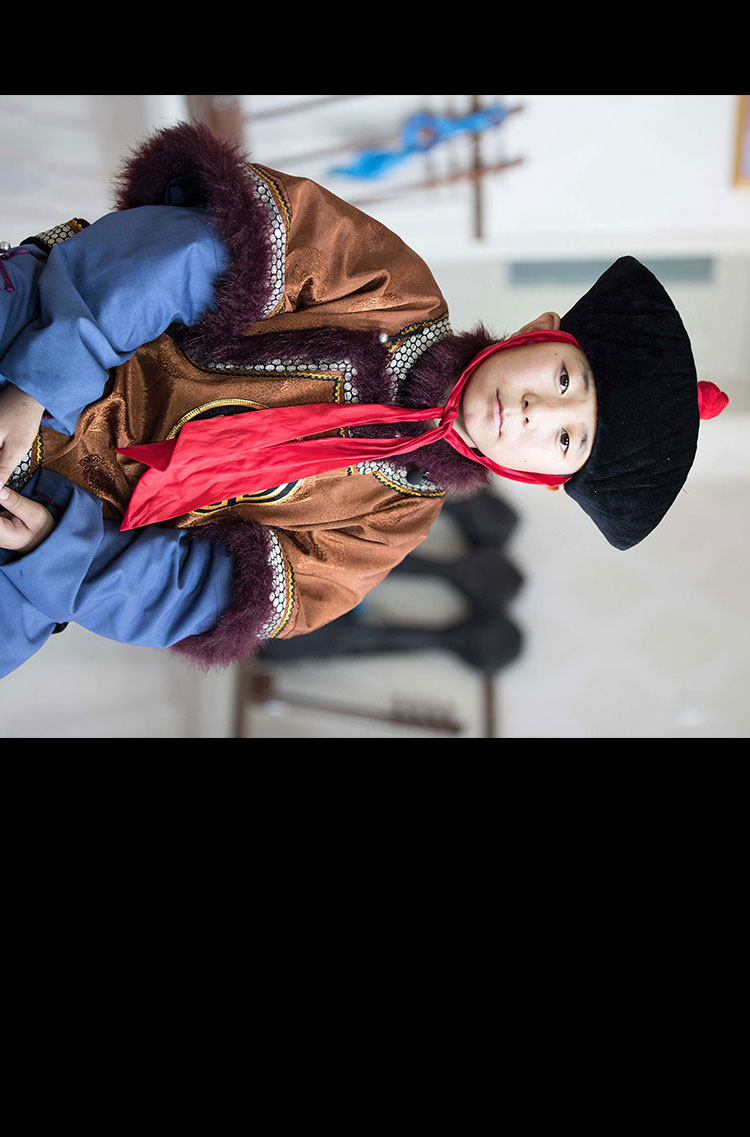



“我肩負(fù)著傳承烏力格爾的使命,我為此感到很自豪。我希望通過(guò)表演讓大家認(rèn)識(shí)到烏力格爾的魅力。”
青格勒?qǐng)D,13歲
扎魯特旗蒙古族實(shí)驗(yàn)小學(xué)學(xué)生
“I am now carrying the responsibility to preserve Uliger, for which I feel very proud. I hope more people can learn about my culture through my performance.”
Qinggelt, 13
Student from Jarud Mongolian Primary School






美國(guó)作家歐亨利曾說(shuō)道:“當(dāng)一個(gè)人熱愛(ài)著他的藝術(shù)時(shí),再多的付出也可以忍受。”13歲的青格勒?qǐng)D或許沒(méi)讀過(guò)歐亨利的作品,卻是這句名言的踐行者。他的父母為他取名“青格勒?qǐng)D”(蒙語(yǔ)意思為開心),而這個(gè)男孩也在烏力格爾這一傳統(tǒng)蒙族藝術(shù)上找到了屬于自己的快樂(lè)。不論炎炎夏日還是簌簌寒冬,青格勒?qǐng)D和他的伙伴們都毫不松懈地練習(xí)烏力格爾。
O. Henry once wrote, "When one loves one's art, no service seems too hard.” Although 13-year-old Qinggelt may know nothing about O. Henry, his love for Uliger, the traditional Mongolian art of singing, has shown the truth of this famous statement.






烏力格爾又被稱為蒙古族的說(shuō)唱音樂(lè),是一種將蒙古族文學(xué)作品和傳統(tǒng)音樂(lè)合二為一的藝術(shù)表現(xiàn)形式。烏力格爾藝術(shù)家一般手持四胡,慷慨激昂地歌頌蒙古族的神話人物和民族英雄。
Dubbed "Mongolian rap," Uliger is a form of traditional art that combines Mongolian music and literature, telling the legends of Mongolian mythological and historical heroes. Uliger performers usually play on a four-stringed fiddle, singing the stories rhythmically.


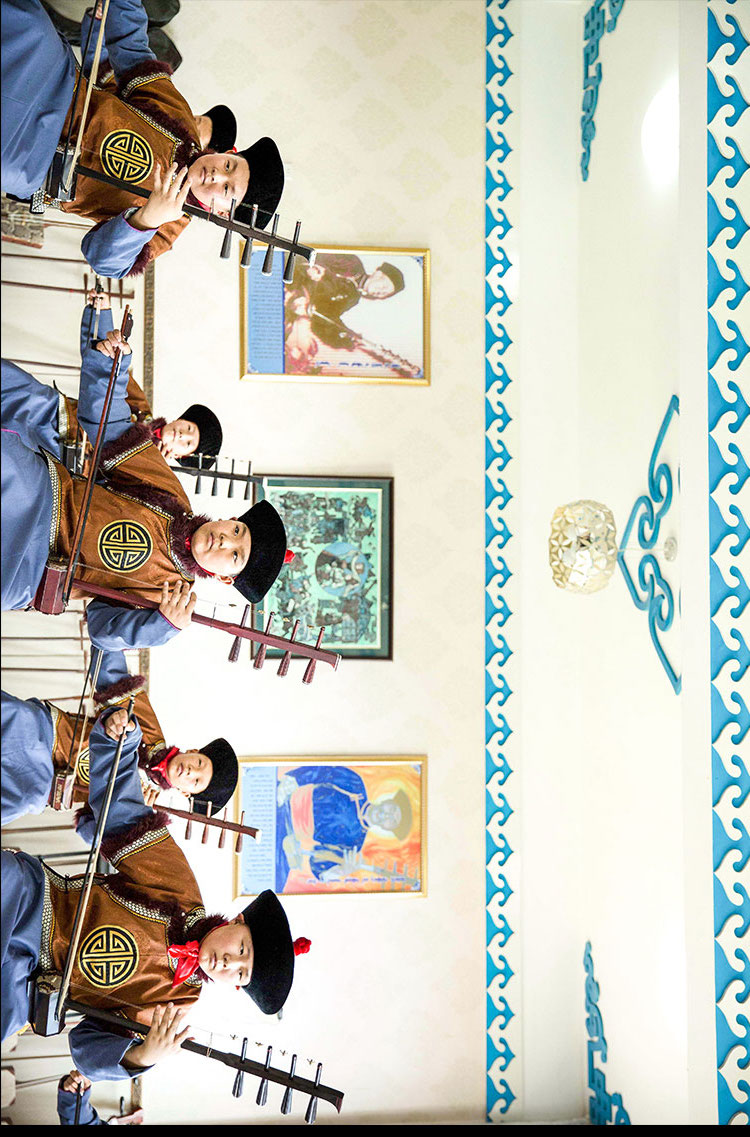



“烏力格爾是蒙古族文化中不可或缺的一部分,已經(jīng)代代相傳很多年了。我的爸爸媽媽都很喜歡我唱烏力格爾,每天我都要花很多時(shí)間練習(xí)烏力格爾,但我不覺(jué)得累,我覺(jué)得很高興。”青格勒?qǐng)D說(shuō)。
《草原文化的繼承者:方興未艾的內(nèi)蒙古傳統(tǒng)文化教育》
點(diǎn)擊閱讀
"Uligers are significant in our culture, given their long-standing tradition of passing stories on by word of mouth. I spend many hours every day polishing my singing skills and memorizing the stories, but I feel quite happy about it," said Qinggelt.
Cultural inheritors on the grassland: traditional art thrives in Inner Mongolian schools




監(jiān)制:劉慧 吳成良 常紅
創(chuàng)意策劃:寇杰
圖片:Tanja Herko
文字:寇杰 申玉環(huán) 徐祥麗 劉潔妍
設(shè)計(jì):張晗
技術(shù):郭棲澎
審校:杜明明 楊牧
音樂(lè):拉西敖斯?fàn)?/span>
